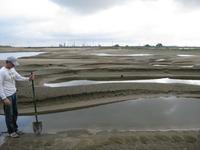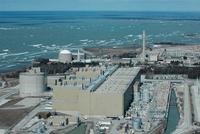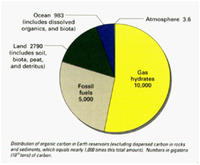-
Avoiding water wars between fracking industry and residents
The shale gas boom has transformed the energy landscape in the United States, but in some drier locations, it could cause conflict among the energy industry, residents, and agricultural interests over already-scarce water resources, say researchers. They add that degraded water quality is a potential risk unless there are adequate safeguards.
-
-
One in ten American schoolchildren in school near risky chemical facility
One year after the fertilizer facility explosion in West, Texas, which destroyed and severely damaged nearby schools, nearly one in ten American schoolchildren live and study within one mile of a potentially dangerous chemical facility. A new study shows that 4.6 million children at nearly 10,000 schools across the country are within a mile of a facility which produces, uses, or stores significant quantities of hazardous chemicals identified by EPA as particularly risky to human health or the environment if they are spilled, released into the air, or are involved in an explosion or fire.
-
-
Dams will not reduce flow of sand to Mississippi River Delta

The wetlands of the Mississippi River Delta are slowly sinking and rapidly eroding, but new research has found the river’s supply of sand — the material engineers most need to rebuild the delta — will stay constant for centuries. The new study is encouraging news for scientists and government officials who are working to shore up southeastern Louisiana’s rapidly disappearing wetlands.
-
-
S.C. fights to keep costly plutonium processing project alive
The United States and Russia have agreed to dispose of thirty-four tons of weapon-grade plutonium each, an amount equal to 17,000 nuclear warheads. The United States budgeted $4 billion for a mixed-oxide fuel project, known as MOX, at the Savannah River Site, S.C., to process the plutonium, but construction costs have now reached $8 billion, and officials estimate the facility will cost about $30 billion over its operating years. DOE has suspended the MOX project and is looking for alternative plutonium processing methods. South Carolina has sued the federal government, arguing that since Congress has authorized the funds for MOX, the administration must spend the money.
-
-
Some see small modular reactors as offering a better future for the nuclear industry
A full-size reactor costs up to $8 billion, takes years to build, and decades to achieve a return on investment. Some experts say the future of the nuclear industry should be based on small underground reactors, which are cheaper and quicker to build. Other experts say that smaller reactors mean needing many more of them to produce the same amount of power as traditional reactors, and having more reactors means increasing security concerns.
-
-
Helping Kansas counties deal with deficient bridges
Seventy-eight of the 105 counties in the state of Kansas have bridges on low-volume rural roads in dire need of repair, replacement, or removal. With an estimated cost of $150,000 per bridge — and nearly 1,000 bridges across the state in the structurally deficient or functionally obsolete categories — replacement bridges are an expensive proposition. A new study offers a way to determine which bridges should be repaired, and which should be closed.
-
-
Climate benefit of biofuels from corn residue questioned
Using corn crop residue to make ethanol and other biofuels reduces soil carbon and generates more greenhouse gases than gasoline, according to a new study. The findings cast doubt on whether corn residue can be used to meet federal mandates to ramp up ethanol production and reduce greenhouse gas emissions.
-
-
Court to decide a Minnesota’s “Buy the Farm” case
Minnesota’s “Buy the Farm” law is the center of a case set for trial later this week, in which developers of CapX2020, the region’s power grid improvement project, will contest a lawsuit by Cedar Summit Farm. The state law requires utilities building high-voltage power lines to buy out farms along the path of the power line if the affected landowners demand it. CapX2020 argues the farm does not meet the buyout criteria set in the law.
-
-
Debate over Ontario, Canada underground nuclear waste facility intensifies

Ontario Power Generation’s (OPG) proposal to construct an underground nuclear waste disposal facility near the company’s Bruce Nuclear plantand on the edge of the Great Lakes is facing growing opposition from local municipalities and environmentalists. The facility would store low and intermediate nuclear waste from OPG’s Bruce, Pickering, and Darlington nuclear facilities. Environmentalists are concerned that a leak in the underground facility would be devastating for communities which depend on water from the Great Lakes.
-
-
Dynamic atolls give hope that Pacific Islands can defy sea rise
It is widely predicted that low-lying coral reef islands will drown as a result of sea-level rise, leaving their populations as environmental refugees. New evidence, however, now suggests that these small islands will be more resilient to sea-level rise than we thought. The new findings suggest that, rather than being passive lumps of rock that will be swamped by rising seas and eroded by storms, the islands are dynamic structures that can move and even grow in response to changing seas. Although the islands may survive into the future, the changes could still affect issues like fresh water and agriculture, potentially making life on these islands much more difficult than it is today.
-
-
More, bigger wildfires burning western U.S.

Wildfires across the western United States have been getting bigger and more frequent over the last thirty years — a trend that could continue as climate change causes temperatures to rise and drought to become more severe in the coming decades, according to new research.
-
-
Red Team’s concepts, approach gain support
Headed by Thom Mason, director of Oak Ridge National Laboratory (ORNL), Red Team aims to modernize the uranium processing procedure on a budget of $4.2 billion to $6.5 billion. Even before Red Teamdelivered its report on alternatives to the expensive Uranium Processing Facility (UPF) at the Y-12 nuclear weapons plant by the 15 April 2014 deadline, the group of experts, who come from different disciplines, had already gained support among energy officials and some members of Congress.
-
-
Floating nuclear plants could ride out tsunamis
When an earthquake and tsunami struck the Fukushima Daiichi nuclear plant complex in 2011, neither the quake nor the inundation caused the ensuing contamination. Rather, it was the aftereffects — specifically, the lack of cooling for the reactor cores, due to a shutdown of all power at the station — that caused most of the harm. A new design for nuclear plants built on floating platforms, modeled after those used for offshore oil drilling, could help avoid such consequences in the future. Such floating plants would be designed to be automatically cooled by the surrounding seawater in a worst-case scenario, which would indefinitely prevent any melting of fuel rods, or escape of radioactive material.
-
-
Long-term predictions for Miami sea level rise could be available soon
Researchers say that Miami could know as early as 2020 how high sea levels will rise into the next century. Scientists conclude that sea level rise is one of the most certain consequences of climate change. The speed and long-term height of that rise, however, are unknown. Some researchers believe that sea level rise is accelerating, some suggest the rate is holding steady, while others say it is decelerating. Scientists say that numbers should continue to be crunched every decade, creating more certainty in long-term planning — and helping develop solutions for a changing planet.
-
-
A few “problem” shale gas wells source of greenhouse gas

High levels of the greenhouse gas methane were found above shale gas wells at a production point not thought to be an important emissions source, according to a new study. The findings could have implications for the evaluation of the environmental impacts from natural gas production. The study, which is one of only a few to use a so-called “top down” approach that measures methane gas levels in the air above wells, identified seven individual well pads with high emission levels and established their stage in the shale-gas development process.
-
More headlines
The long view
Water Wars: A Historic Agreement Between Mexico and US Is Ramping Up Border Tension
As climate change drives rising temperatures and changes in rainfall, Mexico and the US are in the middle of a conflict over water, putting an additional strain on their relationship. Partly due to constant droughts, Mexico has struggled to maintain its water deliveries for much of the last 25 years, deliveries to which it is obligated by a 1944 water-sharing agreement between the two countries.
Trump Is Fast-Tracking New Coal Mines — Even When They Don’t Make Economic Sense
In Appalachian Tennessee, mines shut down and couldn’t pay their debts. Now a new one is opening under the guise of an “energy emergency.”
Smaller Nuclear Reactors Spark Renewed Interest in a Once-Shunned Energy Source
In the past two years, half the states have taken action to promote nuclear power, from creating nuclear task forces to integrating nuclear into long-term energy plans.
Keeping the Lights on with Nuclear Waste: Radiochemistry Transforms Nuclear Waste into Strategic Materials
How UNLV radiochemistry is pioneering the future of energy in the Southwest by salvaging strategic materials from nuclear dumps –and making it safe.
Model Predicts Long-Term Effects of Nuclear Waste on Underground Disposal Systems
The simulations matched results from an underground lab experiment in Switzerland, suggesting modeling could be used to validate the safety of nuclear disposal sites.
